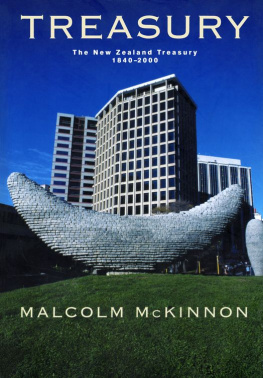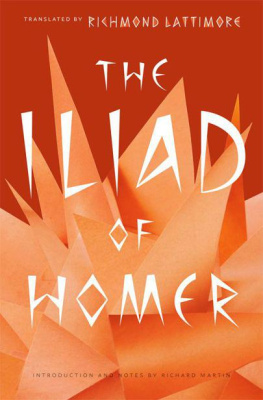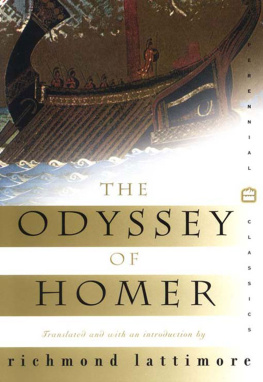Ralph Lattimore - The New Zealand Economy
Here you can read online Ralph Lattimore - The New Zealand Economy full text of the book (entire story) in english for free. Download pdf and epub, get meaning, cover and reviews about this ebook. year: 2011, publisher: Auckland University Press, genre: Politics. Description of the work, (preface) as well as reviews are available. Best literature library LitArk.com created for fans of good reading and offers a wide selection of genres:
Romance novel
Science fiction
Adventure
Detective
Science
History
Home and family
Prose
Art
Politics
Computer
Non-fiction
Religion
Business
Children
Humor
Choose a favorite category and find really read worthwhile books. Enjoy immersion in the world of imagination, feel the emotions of the characters or learn something new for yourself, make an fascinating discovery.

- Book:The New Zealand Economy
- Author:
- Publisher:Auckland University Press
- Genre:
- Year:2011
- Rating:4 / 5
- Favourites:Add to favourites
- Your mark:
- 80
- 1
- 2
- 3
- 4
- 5
The New Zealand Economy: summary, description and annotation
We offer to read an annotation, description, summary or preface (depends on what the author of the book "The New Zealand Economy" wrote himself). If you haven't found the necessary information about the book — write in the comments, we will try to find it.
The New Zealand Economy — read online for free the complete book (whole text) full work
Below is the text of the book, divided by pages. System saving the place of the last page read, allows you to conveniently read the book "The New Zealand Economy" online for free, without having to search again every time where you left off. Put a bookmark, and you can go to the page where you finished reading at any time.
Font size:
Interval:
Bookmark:
An Introduction
Ralph Lattimore and Shamubeel Eaqub
with contributions by Gary Hawke and Philip McCann

This book introduces the structure and performance of the New Zealand economy. It does so by interpreting key data series on the economy in a historical and global context. The book is designed to follow on from an earlier series (The New Zealand Macroeconomy) produced from 1991 to 2004 by Paul Dalziel and Ralph Lattimore.
The book focuses, first, on how the globalisation of the world economy over the last 30 years has transformed the New Zealand economy. Over this period, developing countries have grown more rapidly than high-income countries and become more embedded in global supply chains. At the forefront of these developments has been a set of emerging economies, including China, India and Vietnam, which have grown strongly in recent years. These changes in the global economic landscape are significantly influencing New Zealands performance and prospects.
The book focuses, second, on the continuing effects of the 2007 Global Financial Crisis (GFC). The ensuing recession and the difficulties associated with finding an exit strategy from the massive fiscal and monetary stimuli have left world financial markets in an uncertain state. In this environment, the book pays particular attention to capital and financial markets in New Zealand and overseas.
This book is targeted at two potential audiences. It is designed as an introductory text on the performance of the New Zealand economy for school and university students. It is also aimed at those who want a pocket guide to the New Zealand economy.
New Zealand has developed a reputation in recent decades for what many people consider to be continuous reform. The international trade policy expert Professor Razeen Sally is of the view (Sally, 2009) that New Zealand is one of only two countries in the world that have the capacity to deal politically with continuous reform (the other being Australia). That is a major strength for the nation but it puts a great onus on advisers and analysts in the private and public sectors, and the public at large, to understand how the economy is performing and why. This book is designed to help inform necessary debates on policy changes.
Because it is an introductory text, the book does not go into depth on most economic issues. However, two guest case studies are included which explore issues involved in the process of technological and geographic change in more detail, but in a way that makes these issues accessible to general readers. The first study, by Professor Gary Hawke, explores technical change and related productivity improvements. Technical change is often misunderstood, which leads to incoherent approaches to research and science policy. The second study, by Professor Philip McCann, introduces the new topic of economic geography. This area of research is gaining in popularity at present as it attempts to explain drivers of city and regional economic growth patterns based on productivity improvements unleashed especially by modern communications technology. Both case studies are designed as introductory resources for further exploration in these two important areas of economic research.
The authors owe a large intellectual debt to a number of economists who have contributed to this book through their journal articles and private conversations. Foremost amongst these are Edward Leamers review article in the Journal of Economic Perspectives (2007), the report of the World Banks Growth Commission (2008), Michael Bordos study of New Zealands exposure to the Global Financial Crisis (2009), Kym Andersons prodigious work on world trade distortions, Michael Reddell and Cathy Sleemans work on New Zealand recessions (2008), and Carmen Reinhart and Kenneth Rogoffs momentous study of financial crises (2008). Martin Wolfs column in the Financial Times has been unparalleled in bringing important research on global finance to the fore over the past three years.
The members of the Advisory Committee on Economic Statistics at Statistics New Zealand have contributed ideas in many ways. Special mention must also be made of contributions by Iris Claus, Adolf Stroombergen, Peter Lloyd, Javier Reyes, Martina Garcia, Przemyslaw Kowalski and Raed Safadi.
The Reserve Bank of New Zealand and Statistics New Zealand contributed valuable data for the book and we are very grateful to them for allowing us to use that data here. Oxford University Press kindly agreed to allow us to use selected material from the 2004 edition of Dalziel and Lattimores The New Zealand Macroeconomy: Striving for Sustainable Growth with Equity.
Thanks are also due to all the staff at Auckland University Press, and two anonymous referees, for their assistance and helpful suggestions.
The data used to construct the graphs and tables in the book, which will be updated quarterly, are available to readers at http://sites.google.com/site/eaqubs/
We apologise in advance for any errors or omissions in the manuscript and we welcome any comments readers might like to send.
Ralph Lattimore (Ralph.Lattimore@yahoo.com)
Shamubeel Eaqub (Shamubeel.Eaqub@nzier.org.nz)
AIG | American Insurance Group |
ANZCERTA | Australia New Zealand Closer Economic Relations Trade Agreement |
ANZSIC | Australian and New Zealand Standard Industrial Classification system |
APEC | Asia-Pacific Economic Cooperation |
CFR | core funding ratio |
CPI | consumer price index |
DSIR | Department of Scientific and Industrial Research |
EEC | European Economic Community |
EU | European Union |
FTE | full-time equivalent |
GATT | General Agreement on Tariffs and Trade |
GDP | gross domestic product |
GFC | Global Financial Crisis |
GST | goods and services tax |
ICTs | information and communications technologies |
IMF | International Monetary Fund |
NAFTA | New Zealand Australia Free Trade Agreement (or North American Free Trade Agreement) |
OCR | Official Cash Rate |
OECD | Organisation for Economic Co-operation and Development |
OPEC | Organization of Petroleum Exporting Countries |
PTA | Policy Targets Agreement |
R&D | research and development |
RBNZ | Reserve Bank of New Zealand |
SDRs | Special Drawing Rights |
UN | United Nations |
WTO | World Trade Organization |
New Zealand is a small open economy with an income level that places it among the richest countries in the world. As an open economy, New Zealand has vital links with the rest of the world via trade, migration flows, historic, diplomatic, sporting and cultural affiliations, and market connections in products, components and financial flows. These connections have been developing since the late 18th century, when regular transport and communication links were established with other economies. And as a small economy, with a population of 4.5 million, New Zealand is strongly influenced by offshore market performance through such global ties.
Font size:
Interval:
Bookmark:
Similar books «The New Zealand Economy»
Look at similar books to The New Zealand Economy. We have selected literature similar in name and meaning in the hope of providing readers with more options to find new, interesting, not yet read works.
Discussion, reviews of the book The New Zealand Economy and just readers' own opinions. Leave your comments, write what you think about the work, its meaning or the main characters. Specify what exactly you liked and what you didn't like, and why you think so.








